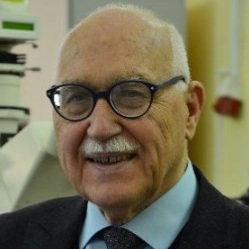The 15th Anniversary of Materials—Recent Advances in Optical and Photonic Materials
A special issue of Materials (ISSN 1996-1944). This special issue belongs to the section "Optical and Photonic Materials".
Deadline for manuscript submissions: closed (31 December 2023) | Viewed by 4623
Special Issue Editor
2. Laboratory of Laser Molecular Imaging and Machine Learning, Tomsk State University, Tomsk, Russia
3. А.N. Bach Institute of Biochemistry, FRC “Fundamentals of Biotechnology”, Moscow, Russia
Interests: biological and medical physics; biophotonics; biomaterials, laser spectroscopy; laser and optical systems; optical and laser measurements; nanobiophotonics; terahertz dielectric spectroscopy and microscopy; LIBS; phototherapy
Special Issues, Collections and Topics in MDPI journals
Special Issue Information
Dear Colleagues,
Fifteen years have passed since the foundation of Materials. In connection with the large flow of articles on optical topics, a special Section on Optics and Photonics was created several years ago. Each quarter, up to 50 articles are published in this Section, which covers a wide range of topics in materials science, including innovative materials for lasers, light guides, sensors, thin films, solar cells, magnetic and plasmonic materials, metamaterials, etc., capable of operating in various wavelength ranges from X-ray/UV, VIS/IR and further to the terahertz range.
At the same time, optical technologies provide precision processing of all types of materials using widely used methods such as photolithography, laser printing and engraving, laser ablation to obtain nanomaterials, etc. Nowadays, it is difficult to characterize new materials without optical technologies; all types of spectroscopy and microscopy are widely used to test materials of various nature and state of aggregation. Confocal microscopy, Raman spectroscopy, optical coherence tomography, multiphoton microscopy, LIBS, polarization methods, speckle technologies, and dynamic light scattering methods and their combinations are effective and affordable tools in many laboratories around the world.
Biomedical optics and biophotonics is another rapidly developing interdisciplinary field that requires innovative biocompatible materials for implants, tissue phantoms, pathological cell labeling, cell and organ printing, light delivery to internal organs, etc. In addition, the complex biological tissue itself is an object of study in terms of investigation of its unique mechanical, electrical, molecular, optical, and atomic properties.
This Special Issue will present and discuss modern advances and trends in the development of optics and photonics of various materials, as well as the features of the interaction of optical radiation with these materials, including nanomaterials, metamaterials, and biological materials. The collected articles will contribute to the promotion of promising ideas for the creation of new smart and controlled materials with unusual properties, which are urgently needed in modern industry and medicine.
It is my great pleasure to invite you to submit a manuscript to this Special Issue. Full articles, letters, tutorials, and reviews are welcome.
Prof. Dr. Valery V. Tuchin
Guest Editor
Manuscript Submission Information
Manuscripts should be submitted online at www.mdpi.com by registering and logging in to this website. Once you are registered, click here to go to the submission form. Manuscripts can be submitted until the deadline. All submissions that pass pre-check are peer-reviewed. Accepted papers will be published continuously in the journal (as soon as accepted) and will be listed together on the special issue website. Research articles, review articles as well as short communications are invited. For planned papers, a title and short abstract (about 100 words) can be sent to the Editorial Office for announcement on this website.
Submitted manuscripts should not have been published previously, nor be under consideration for publication elsewhere (except conference proceedings papers). All manuscripts are thoroughly refereed through a single-blind peer-review process. A guide for authors and other relevant information for submission of manuscripts is available on the Instructions for Authors page. Materials is an international peer-reviewed open access semimonthly journal published by MDPI.
Please visit the Instructions for Authors page before submitting a manuscript. The Article Processing Charge (APC) for publication in this open access journal is 2600 CHF (Swiss Francs). Submitted papers should be well formatted and use good English. Authors may use MDPI's English editing service prior to publication or during author revisions.
Keywords
- photonic crystals
- micro- and nanostructured materials
- plasmonic nanoparticles
- magnetic materials
- microcapsules
- photoacoustics
- optical imaging
- optical elastography
- lasers
- LIBS
- LEDs
- waveguides
- UV
- terahertz
- laser printing
- tissues and cells
- tissue phantoms
- contrast agents
- optical clearing
- drug delivery
- optogenetics
- implants
- regenerative materials
- molecule diffusion
- tissue regeneration
- photodynamic therapy
- photothermolysis
- laser therapy






